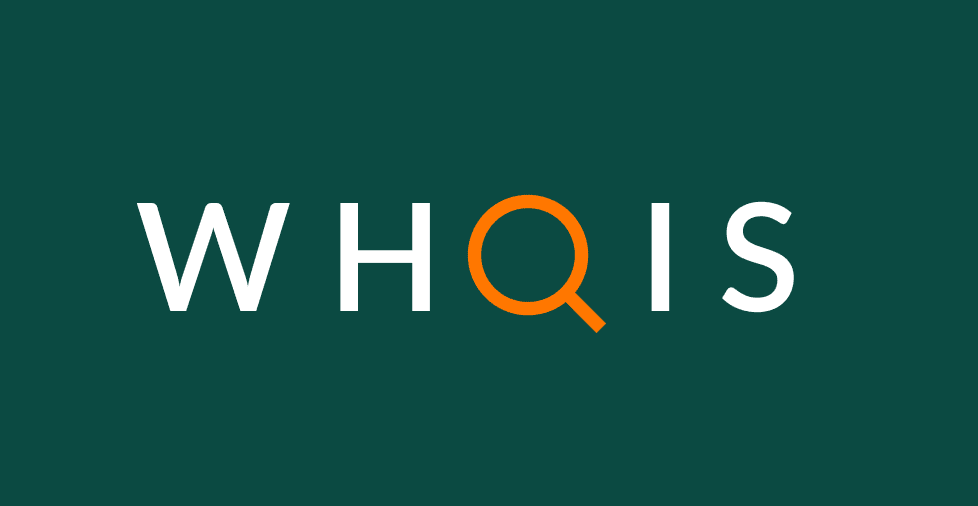Key takeaways:
- WHOIS is a public database that provides detailed domain information.
- Registrars and other service providers offer a service that hides your personal information from public WHOIS lookups.
- WHOIS allows you to access the contact information of domain owners, which is useful for business inquiries and resolving domain-related legal disputes.
When choosing a domain for building your online presence, it’s important to know that there’s a public directory for all registered domain names. In case somebody has already taken your chosen domain name, you can use this to find out who owns it and explore options for purchasing or negotiating. This directory, WHOIS, provides detailed information about the ownership and registration of domain names.
The WHOIS lookup is your go-to resource for checking “who is” responsible for a certain domain or IP address. Understanding how it works and what data it provides helps you decide about domain ownership, dispute resolution, and online safety.
In this guide, we will explore the importance and purpose of WHOIS, the information it contains, and how to use it effectively. Towards the end, you’ll have a clear understanding of how WHOIS can help safeguard your online presence.
What is WHOIS?
WHOIS primarily collects information about the domain’s registration and registrant, including which nameservers are used (which then point to DNS settings). It doesn’t collect all granular DNS settings (how and where your domain’s various services point) updates.
Think of it as a public directory for the internet, providing details on who owns a domain and how to reach them. ICANN, the organization responsible for overseeing domain name allocations, regulates the WHOIS directory. It validates that websites are registered correctly to keep them safe and secure.
WHOIS is a publicly accessible directory that lists domain name owners and their contact and technical information. It also provides details such as the domain’s registration and expiration dates.
The information stored in the WHOIS database is held in various locations and managed by domain registrars. Each domain registrar and registry manages specific TLDs such as .com and .net, ensuring that every detail is precise and well-updated.
The WHOIS lookup has existed since the early days of the internet. It created accountability in the domain registration system and ensured every domain had a traceable owner. As the Internet grows, it remains an important tool for tracking domain ownership.
Why was WHOIS created?
The database was originally created as a directory to store contact information for anyone transmitting data across Advanced Research Projects Agency Network (ARPANET), a precursor to today’s Internet.
WHOIS was created to manage domain name registrations and ensure the smooth functioning of the DNS. As the Internet grew in the 1980s, a public directory was needed to track domain ownership and contact information. Over time, it became an essential tool for managing online identities and remains important today for verifying domain ownership and contact information.
Anyone online can use the WHOIS lookup. It is a valuable source for business owners to check domain details like domain availability, examine potential infringements, and make data-driven decisions.
What is WHOIS for?
WHOIS serves multiple purposes, providing valuable information about domain ownership. Below are some use cases where WHOIS can be beneficial:
- Verifying domain ownership. WHOIS allows you to verify who owns a domain name. Knowing a domain owner is useful when you’re looking to purchase an existing domain or need to resolve ownership disputes.
- Accessing contact information. WHOIS provides access to domain owners’ contact information, including their email address and contact number. It makes it easier for you to reach out for business, collaboration, or legal matters.
- Tracking domain history. WHOIS can help you track a domain’s history, including when it was registered, who registered it, and whether there have been any changes to ownership.
- Preventing fraud. WHOIS records can help you identify potential fraudulent domains or individuals involved in malicious activities. You can check if the information given is legitimate or fake.
What kind of information is stored in the WHOIS database?
The WHOIS database stores important details about a domain, including:
- Registrant Name. The individual or organization that owns the domain.
- Registrant Contact Information. Email and phone number for inquiries or disputes.
- Domain Registration Date. The date the domain was initially registered.
- Domain Expiration Date. The date the domain registration officially expires.
- Nameservers. The DNS details that direct traffic to the appropriate web hosting service.
Due to privacy concerns, some registrants use services that hide their information in the WHOIS lookup results.
This is where domain privacy comes in. It’s an add-on service that uses the registrar’s information—sometimes with third-party details—to mask the registrant’s details in the public database.
How to protect your information on WHOIS
Your domain registration information is publicly visible through WHOIS. If you use your personal information during registration, it’s accessible to anyone. While useful for transparency and accountability, it exposes you to privacy risks such as spam, phishing, or identity theft.
Follow these tips to protect your personal information:
- Use WHOIS privacy protection. Many domain registrars, such as Network Solutions, offer WHOIS privacy protection. This service replaces your contact details with the registrar’s contact information in the WHOIS database.
- Register domains under a business name. If you’re running a business or a professional website, consider using your business information upon registration. This way, your personal details won’t be directly tied to the domain.
- Use an alternate contact email. Register a separate email address for domain-related communications. You keep your personal email address hidden, which reduces the risk of receiving unsolicited or malicious emails.
- Monitor your WHOIS data. Regularly check your WHOIS information to ensure nobody has updated it. This can help identify if someone has exposed your personal details or initiated unauthorized changes to your registrant information.
- Consider a trusted registrar. Choose a reputable domain registrar with strong privacy policies and reliable WHOIS protection services. Some registrars, like Network Solutions, offer additional security features that can help keep your personal information safe.
How to use WHOIS
Follow these steps to look up domain information and gain insights about a website’s registration details:
- Choose a WHOIS lookup tool. Several websites offer free WHOIS search services. The most popular for generic top-level domains are ICANN WHOIS, Whois.com, and Who.is.
- Enter the domain name. Once on the WHOIS lookup page, enter the domain name in the search bar and click Search. Make sure to input the correct domain name and domain extension.

- Review the search results. The WHOIS tool will return detailed information about the domain. The result will look like the following for the domain sample.com:

- Interpret the results. Go through the information and check the ones that matter for your purpose:
- Registrar. The company that manages the domain registration.
- Registrant. The entity that owns the domain name.
- Registrar contact information. The email, phone number, and address of the registrar
- Registrant contact information. The email, phone number, and address of the registrant
- Status. This informs whether the domain is active, expired, transferable, or in a redemption period.
- Name servers. Servers associated with the domain that handle DNS queries. They indicate which service provider directs traffic to the domain’s website.
RDAP and the future of WHOIS
As the internet continues to grow, the need for more secure, efficient, and accessible domain registration data has led to the development of the Registration Data Access Protocol (RDAP).
RDAP is a new protocol designed to replace WHOIS. It offers enhanced functionality and addresses some of the limitations of the traditional WHOIS system. RDAP is a more modern, secure, and structured way to access domain registration information. Unlike WHOIS, RDAP delivers data in a standardized, machine-readable format, making it easier for humans and automated systems to interpret and use.
Most of the domain industry still relies on WHOIS because of its simplicity and wide adoption. But RDAP will become the dominant protocol for accessing domain registration information in the future, prioritizing user privacy and data security.
Verify your domain with WHOIS and secure it with Network Solutions
We’ve uncovered the vital role WHOIS plays in shaping your online presence. WHOIS helps you build a more trusted, secure, and transparent digital footprint by giving you the tools to verify domain ownership and spot potential fraud.
To leverage WHOIS insights, Network Solutions offers powerful tools for effective domain management. WHOIS Lookup lets you quickly check domain availability, while Domain Privacy + Protection keeps your personal information safe. Plus, you can rest assured you won’t miss a renewal deadline with our Domain Expiration Protection.
Explore these services today and take control of your online identity!
Frequently asked questions
WHOIS data is generally reliable, as it’s managed by accredited registrars and regulated by ICANN. However, the accuracy of the information depends on the registrant. Some may use privacy protection services to hide their details, while others may provide incorrect or outdated information.
If your WHOIS information is incorrect, it can lead to issues like losing ownership of your domain, missing important updates, or having trouble resolving disputes. Make sure to keep your details accurate and updated to avoid potential legal complications.
To change or remove your WHOIS information, contact your domain registrar. Depending on their policy for managing domain records, you can update the details through their control panel or via a form.
WHOIS information helps verify domain ownership, track a domain’s history, access contact details for business or legal purposes, and protect against fraud. It ensures transparency and accountability in the domain registration system.




